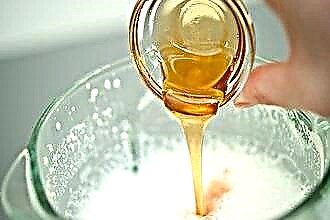The valve apparatus of the heart ensures correct hemodynamics and blood flow from the cavities of the organ to the large great vessels. Heart defects and valve defects interfere with blood circulation, leading to acute heart failure. Malfunctions become chronic and pose a threat to human life. It is possible to surgically replace the destroyed valves with an implant. The operation is performed by a team of cardiac surgeons. After prosthetics, rehabilitation is indicated to improve well-being.
Indications for prosthetics
For normal blood flow, the coordinated work of the valve apparatus is necessary. The mitral, aortic, tricuspid and pulmonary valve provide blood flow from the heart chambers to the aorta and pulmonary trunk, playing a major role in hemodynamics. When their valves are destroyed, narrowed or incompletely closed, blood enters the vessels in insufficient quantities, which leads to progressive heart failure. The only way to improve the patient's condition is to promptly eliminate the defect and install a mechanical or biological implant. Heart valve replacement and prosthetics are indicated when:
- congenital or acquired heart disease, heart disease;
- postinfarction pathology, aneurysm;
- prolapse, stenosis, or insufficiency;
- atherosclerotic lesions;
- diseases of rheumatic etiology;
- valve atresia;
- infective endocarditis and septic lesions;
- fibrous scars or adhesions on the valves;
- calcification and induration.
Clinical signs indicating the need for surgery:
- decreased exercise tolerance;
- the occurrence of shortness of breath, the inability to sleep in a horizontal position, the appearance of moist wheezing in the lower parts of the lungs (due to an increase in pressure in the pulmonary circulation);
- ultrasound imaging of blood clots in the heart cavities;
- expansion of the cavities of the heart on echocardiography (left atrium more than 40 mm);
- the occurrence of arrhythmias (extrasystole, blockade).
Techniques for performing and techniques of the operation
Before surgery, laboratory and instrumental studies are performed to determine contraindications and the degree of risk of undesirable consequences.

The following analyzes are prescribed:
- general and biochemical blood;
- coagulogram;
- liver function tests (AST, ALT, bilirubin);
- blood tests for viral hepatitis and HIV;
- blood sugar (to exclude diabetes mellitus);
- chest x-ray;
- Ultrasound of the heart.
For prosthetics, two types of valves are used:
- Mechanicalmade of special alloys with the addition of graphite or synthetic silicone. The mechanism of such implants: ball, petal with two or three leaves, ventel-like oblique disc. They are durable, however, they require certain medications to be taken after surgery.
- Biologicalmade from patient allograft, porcine or equine xenograft. The most commonly used tissue is animal origin. Indicated for severe cardiac pathology with intolerance to anticoagulants, the elderly.
Heart valve replacement surgery can be open with staples and sutures, or minimally invasive. In the second case, extensive intervention is not performed: access is obtained with catheters and a stent through a punctured vein and a small incision in the thigh.
- At open surgery all valves are prosthetic. A sternotomy is done - a dissection of the skin and sternum to the heart. Through an incision in the atrium or ventricle, access to the affected valve is obtained. The implant is placed in place of the destroyed one, fixed with sutures. The dissected area is sutured, staples and wire stitches are applied for fusion and healing.
- Minimally invasive methods include transapical prosthetics... A small incision is made in the intercostal space on the right and a small incision in the heart, through which a guidewire with a camera, a catheter and an implant are inserted. Used to replace mitral and tricuspid valves.
- Prosthetics through the femoral vein the most gentle, used for the aortic valve. A heart-lung machine is not needed. After sedation, a catheter with a folded valve is inserted through a small incision in the thigh into the vessel and advanced to the cardiac cavities under X-ray control. Having reached the valve, the surgeons inflate the vessel with a balloon, and the implanted element fills the lumen on its own.

Contraindications to implantation
Prosthetics are not recommended for:
- acute circulatory disorders;
- decompensated heart failure with EF <25-20%;
- exacerbation of asthma;
- diabetes and kidney failure;
- intoxication against the background of viral or infectious diseases;
- liver failure in the stage of decompensation.
The choice of the method of prosthetics depends on the patient's case, his main diagnosis, the proposed scale of surgery and the verdict of the cardiac surgeon. In case of contraindications for urgent surgery, supportive therapy is required to prepare the patient.
Rehabilitation and possible complications
At the end of the successful prosthetics, the patient is in intensive care for two days. This is necessary to restore strength after anesthesia, anesthesia and sedation. The period of stay in intensive care is two to three days, then in the hospital for three to four weeks. During this time, the wound heals on the sternum, the body adapts to hemodynamics after prosthetics. Throughout the entire period, the doctor regularly measures blood pressure, evaluates the state of the heart and suture by ultrasound.
After a minimally invasive replacement, recovery takes no more than seven to ten days. Given the small size of the wound, healing occurs faster, with less severe pain.
Postoperative rehabilitation includes:
- Limiting physical activity in the first week.
- A gradual increase in motor activity during the first two weeks.
- Prescribing drug therapy to prevent thrombosis, valve blockage by a thrombus.
- Individual selection of the load regime after the restoration of hemodynamics.
- Special diet and condition control.
Most often, after prosthetics, you are worried about:
- general weakness;
- occasional dizziness;
- headache;
- aching pain in the seam area;
- periodic pain in the heart;
- swelling of the legs;
- sleep disturbance.
Typically, these complications are not permanent and disappear within four to five weeks after surgery.
If the condition worsens, they turn to a cardiologist or surgeon. Early examination prevents the operative consequences of heart valve replacement and improves the patient's life.
Conclusions
The prognosis for prosthetics is favorable. Surgical elimination of heart defects, stenosis and insufficiency of heart valves reduces the risk of disability, death from heart failure and significantly improves well-being. After surgery, the risk of death is associated with thrombosis of large vessels or the site of the implanted valve. It is imperative to follow the recommendations and prescriptions of your doctor. Rehabilitation in a sanatorium or cardiological hospital helps to maintain good health for many years after surgery.



